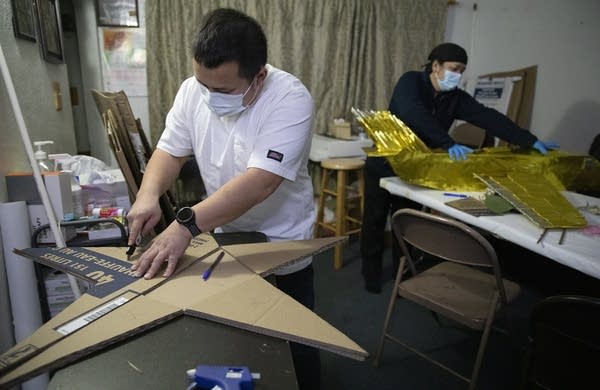How COVID-19 impacted the Hmong community

Ching Vang, 30, (left) cuts cardboard into a star-shaped flower on Jan. 22 as Chai Xiong moves an airplane decorated with paper money boats. Rather than the traditional large nightly gatherings, only close family members have met to fold thousands of paper money boats, which are used as money in the afterlife for the deceased person.
Christine T. Nguyen | MPR News file
Go Deeper.
Create an account or log in to save stories.
Like this?
Thanks for liking this story! We have added it to a list of your favorite stories.


